17.05.2021
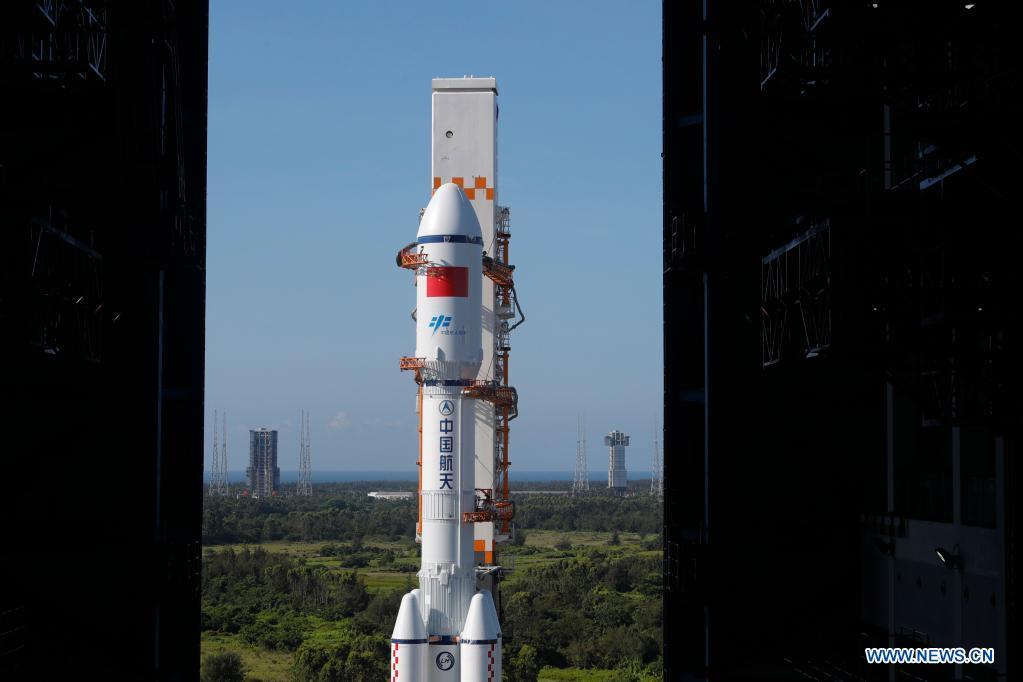
Photo taken on May 16, 2021 shows the combination of the Tianzhou-2 cargo spacecraft and the Long March-7 Y3 carrier rocket waiting to be transferred to the launching area of the Wenchang Spacecraft Launch Site in south China's Hainan Province. The facilities and equipment at the launch site are in good condition, while various pre-launch function checks and joint tests will be carried out as planned, according to the China Manned Space Agency (CMSA). (Photo by Guo Wenbin/Xinhua)
The combination of the Tianzhou-2 cargo spacecraft and the Long March-7 Y3 carrier rocket has been transported to the launching area of the Wenchang Spacecraft Launch Site in south China's Hainan Province on Sunday, according to the China Manned Space Agency (CMSA).
The facilities and equipment at the launch site are in good condition, while various pre-launch function checks and joint tests will be carried out as planned, the CMSA said. Enditem
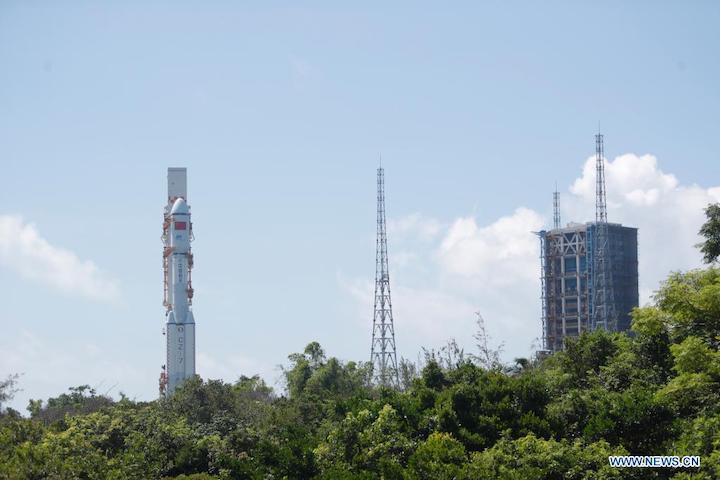
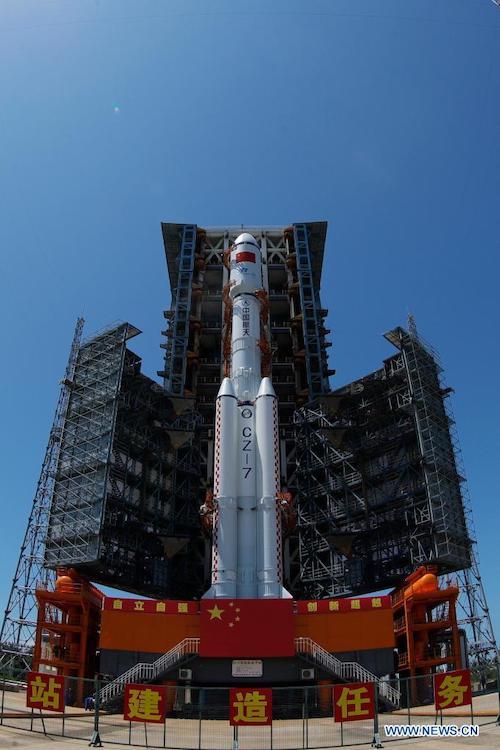
Quelle: Xinhua
----
Update: 19.05.2021
.
China rolls out rocket for Tianzhou-2 space station supply mission

HELSINKI — China is set to launch the Tianzhou-2 space station cargo mission this week after rollout of a Long March 7 rocket at Wenchang spaceport.
Rollout took place late May 15 Eastern (May 16 local time) at the coastal Wenchang satellite launch center. Final checks, rehearsals and pre-launch preparations will take place ahead of an instantaneous launch window expected around May 20 local time.
The roughly 13-metric-ton Tianzhou-2 cargo spacecraft will head to low Earth orbit to rendezvous and dock with China’s Tianhe space station core module.
Tianzhou-2 will transfer propellant to Tianhe for maintaining its orbit and also deliver supplies to support crewed future missions.
Three astronauts are set to launch for Tianhe on the three-month Shenzhou-12 mission in June. The mission will launch on a Long March 2F rocket from Jiuquan in the Gobi Desert.
Tianzhou-2 will carry 4.69 tons of cargo in a pressurized segment and 1.95 tons of propellant, according to the China Manned Space Agency (CMSA).
The 22.5-ton Tianhe space station core module launched late April 28 Eastern on a Long March 5B rocket and is now in a 360 by 385-kilometer orbit inclined by 41.5 degrees. The core stage of the Long March 5B made an uncontrolled reentry May 8 after intense media coverage.
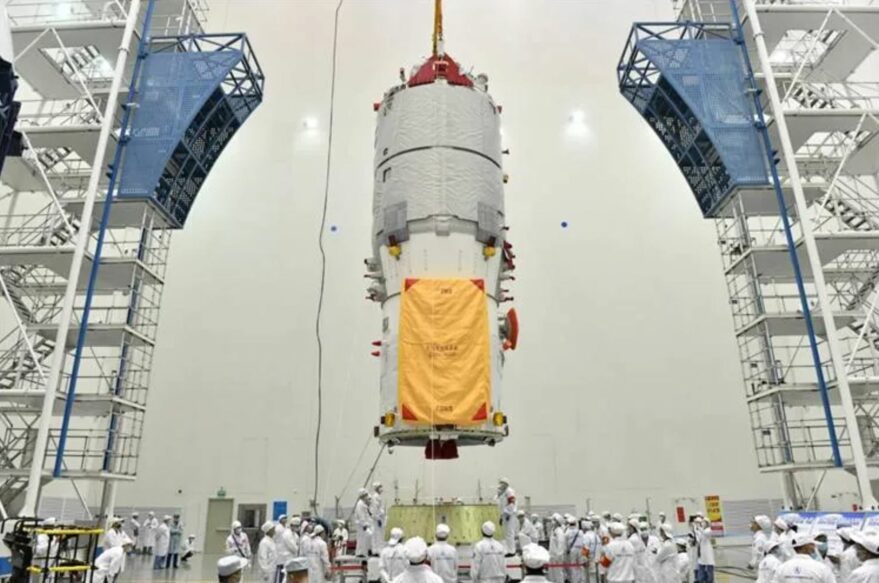
Tianzhou-2 is the second of 11 launches scheduled for 2021 and 2022 to construct China’s 66-ton, three-module orbital outpost.
A Long March 2F rocket and Shenzhou spacecraft will also be on standby at all times at Jiuquan to perform emergency rescue missions to the space station.
China launched Tianzhou-1 in 2017 to dock with the Tiangong-2 space lab. That mission tested and verified technologies for fuel transfer in microgravity, a necessary capability for maintaining the orbit of the Chinese space station.
The Long March 7 is one of a number of new-generation kerolox and hydrolox rockets developed by China over the past decade. These include the Long March 5, 6, 7 and 8 series of rockets.
It is powered by 120-ton-thrust YF-100 and 18-ton-thrust YF-115 engines burning kerosene and LOX on the first, second and booster stages. The first stage will not reach orbital velocity and will fall within a predefined area in the ocean.
China first conceived its plan to construct a space station in 1992. The country became the third to develop independent human spaceflight capabilities with the Shenzhou-5 mission in 2003.
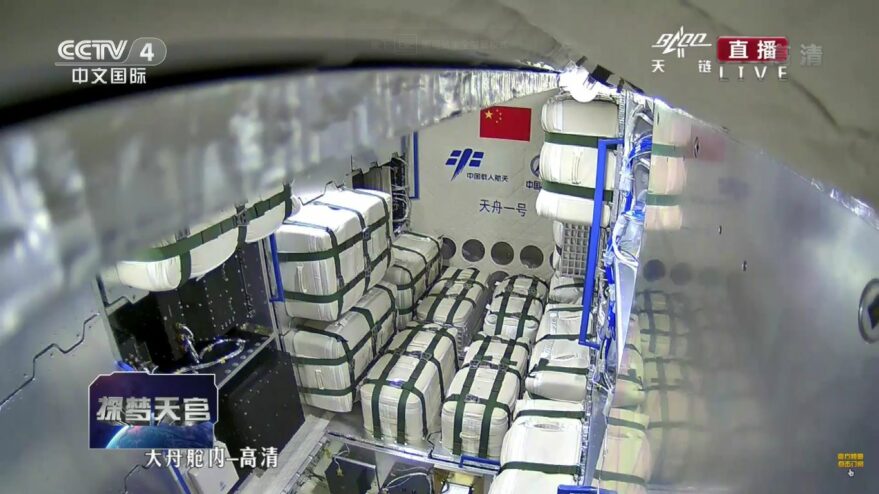
China's core space station module Tianhe completes in-orbit tests
China's core space station module Tianhe has recently completed its platform function tests and entered the orbit to rendezvous and dock with the Tianzhou-2 cargo spacecraft, according to the China Manned Space Agency (CMSA) on Tuesday.
The core module, which was sent into orbit on April 29, has recently completed platform function tests for rendezvous and docking, astronaut stay and the mechanical arms, as well as in-orbit performance checks for space application project equipment.
The CMSA said the core module's various functions are normal. It is operating in good condition and has entered the orbit for rendezvous and docking. It will continue its preparations for rendezvous and docking with the Tianzhou-2 cargo spacecraft. Enditem
Quelle: Xinhua
----
Update: 21.05.2021
.
China delays mission while NASA congratulates on Mars images
China has postponed a supply mission to its new space station for unspecified technical reasons, while photos sent back from Mars by its newly arrived rover earned plaudits from NASA
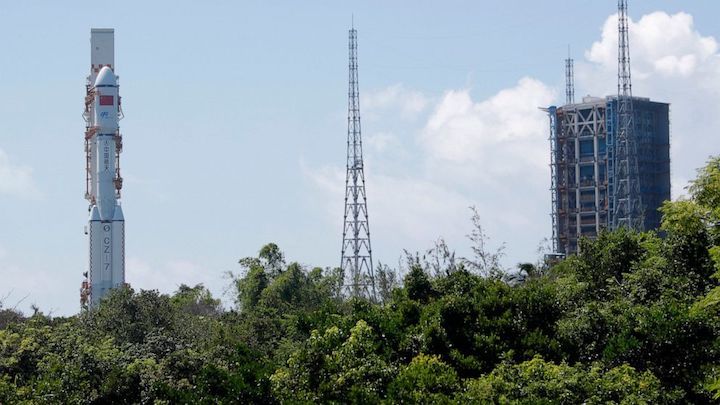
BEIJING -- China postponed a supply mission to its new space station on Thursday for unspecified technical reasons, while photos sent back from Mars by its newly arrived rover earned plaudits from NASA despite only sporadic contacts between the Chinese and American space programs.
The Tianzhou-2 cargo spacecraft was to have been launched early Thursday morning. China Manned Space announced the delay on its website but didn't say when the rescheduled launch would occur.
It would be the first mission to the main Tianhe space station module that was launched on April 29. A total of 11 launches are planned by the end of next year to deliver the station’s other two modules, various components and supplies and a three-person crew.
The launch of Tianhe, or Heavenly Harmony, was considered a success although China was criticized for allowing the uncontrolled reentry to Earth of part of the rocket that carried it into space. Usually, discarded rocket stages reenter the atmosphere soon after liftoff, normally over water, and don’t go into orbit.
NASA Administrator Sen. Bill Nelson said at the time that China had failed to meet responsible standards regarding space debris.
China's space program has suffered relatively few setbacks since it first put an astronaut into orbit in 2003, although the space station launch was delayed by the failure of an earlier version of the massive Long March 5B rocket.
Earlier this month, China also landed a probe, Tianwen-1, and its accompanying rover, Zhurong, on Mars and has begun sending back pictures from the surface of the red planet.
In a message posted to the NASA website on Wednesday, Nelson congratulated the China National Space Administration on receiving those first images.
“As the international scientific community of robotic explorers on Mars grows, the United States and the world look forward to the discoveries Zhurong will make to advance humanity’s knowledge of the Red Planet. I look forward to future international discoveries, which will help inform and develop the capabilities needed to land human boots on Mars,” Nelson said.
The pictures were taken by Zhurong from atop its landing platform. Since setting down on Saturday, the rover has been conducting diagnostic tests and will shortly descend its ramp to begin a search for signs of frozen water.
The United States is the only other country to have successfully landed and operated a spacecraft on Mars — nine times, beginning with the twin Vikings in 1976 and, most recently, with the Perseverance rover in February.
China also recently brought back lunar samples, the first by any country’s space program since the 1970s, and also landed a probe and rover on the moon’s less explored far side.
China earlier launched two smaller experimental space stations. It has been excluded from the International Space Station largely at the insistence of the United States, which is wary of the secrecy surrounding the Chinese space program and its close military links. Congressional approval is also required for any cooperation between NASA and the CNSA.
Quelle: abcNews
----
Update: 29.05.2021
.
China launches Tianzhou 2, first cargo mission to new space station

China has launched its Tianzhou 2 cargo mission to its new space station. Liftoff from the Wenchang Spacecraft Launch Site occurred Saturday, 29 May at 12:55 UTC / 08:55 EDT aboard a Chang Zheng 7 rocket following two previous scrubbed launch attempts in early May.
Tianzhou 2 marks the second flight of the uncrewed Tianzhou spacecraft, which China uses to resupply its newly-launched space station, and the first such mission in support of a crew.
Tianzhou history and mission
Tianzhou 1 launched to the Tiangong 2 station in April 2017 and conducted a series of docking demonstrations and propellant transfer tests over the course of a five-month mission. This test flight was conducted after the departure of Tiangong 2’s only visiting crew – and ended with the Tianzhou spacecraft undocking and deorbiting to a destructive reentry.
The Tianzhou spacecraft is similar in function to the Progress spacecraft used by Russia (and formerly the Soviet Union) to resupply the last two Salyut stations, Mir, and the International Space Station. Cargo spacecraft play a vital role for long-duration space station expeditions by allowing provisions, replacement parts, and new scientific equipment and/or experiments to be delivered to the crew periodically. Other spacecraft fulfilling this role for the International Space Station include the US Cygnus and Cargo Dragon and the Japanese Kounotori (HTV) crafts — and formerly the European Automated Transfer Vehicle (ATV).
Like all of these spacecraft except for the Cargo Dragon, Tianzhou is designed for a one-way trip to the Chinese space station. At the end of its mission, it will be deorbited and burn up as it reenters the Earth’s atmosphere.
Tianzhou 2’s launch will be the first mission to dock with China’s new space station, following the successful launch of the Tianhe core module last month. The arrival of Tianzhou 2 and the supplies it is bearing will be the last major milestone before the first crewed launch to the station, currently slated for no earlier than 10 June with the Shenzhou 12 mission.
Tianzhou 2 will dock at the aft port of the Tianhe module and will remain there through most of the three-month Shenzhou 12 expedition. It is carrying 4,690 kilograms of supplies and equipment for the station and its first crew, including a pair of spacesuits, crew provisions, and equipment for installation activities inside and outside of the outpost. The spacecraft is also carrying 1,950 kilograms of propellant, which can be used for maneuvering or transferred to the Tianhe core module.
Towards the end of the Shenzhou 12 crew’s stay aboard the space station, Tianzhou 2 is expected to undock to perform a rendezvous test. After Shenzhou 12 departs the station, Tianzhou 2 will re-dock at the forward port that Shenzhou previously occupied. Once re-docked, a propellant transfer test will be conducted.
Shortly after Shenzhou 13 arrives at the station in October, the crew will test the station’s robotic arm by relocating Tianzhou 2. After the robotic arm test, Tianzhou 2 will depart the space station loaded with trash and unneeded hardware for disposal.
The Tianzhou 2 mission will occur during the “Critical Technology Validation Phase” of the new space station program. This is the first of three phases of operation, lasting from the launch of Tianhe up to the departure of the second crew aboard Shenzhou 13 early next year. This will encompass checkout and preparation of the Tianhe module before the second, or “Construction Phase”, commences — during which the Wentian and Mengtain science modules will arrive. Once these have been installed, tested, and configured, the station will enter its final “Operational Phase” in 2023.
Launch
Tianzhou 2 was launched aboard a Chang Zheng 7 (CZ-7) – also known as Long March 7 – a two-stage vehicle which forms part of China’s new-generation fleet of modular rockets.
The vehicle’s first stage consists of a 3.35 meter core powered by a pair of YF-100 engines. This is surrounded by four side-mounted boosters, each with a single additional YF-100. The second stage retains the same diameter as the first stage and is powered by a single YF-115 engine.
Tianzhou 2’s launch marked the fifth flight for the Chang Zheng 7 rocket overall and the third to use the CZ-7 configuration. The other two launches used the CZ-7A variant, which adds a cryogenic-propellant third stage to enable geostationary launches.

A Chang Zheng 7 lifting off from Wenchang.
The first flight of the Chang Zheng 7 came in June 2016, carrying a scaled-down prototype crew capsule to support testing for future human spaceflight projects. The rocket’s second flight, ten months later, carried Tianzhou 1 into orbit. Two CZ-7A launches took place in March 2020 and March 2021 with experimental geosynchronous satellites aboard, with the 2020 launch failing to reach orbit due to an issue around the time of first stage separation. This remains the only failure for the CZ-7 series, with an investigation determining the most likely cause to be a premature cutoff of one of the four boosters, although other reports suggested the vehicle disintegrated shortly after second stage ignition.
The Chang Zheng 7 for Tianzhou 2 is numbered Y3, reflecting its status as the third flight of the two-stage CZ-7. CZ-7A rockets are numbered separately.
The CZ-7 is part of a wider family of rockets that China has introduced over the last few years, which will eventually replace their ageing fleet of Chang Zheng 2, 3 and 4 rockets that currently account for most of the country’s launches. The newer family of rockets are designed around a series of modular core stages: for example, the 3.35 meter core that is used as the first stage of the CZ-7 also serves as the first stage of the Chang Zheng 8 and as the side-mounted boosters for the Chang Zheng 5. A shortened single-engine version is used as the first stage of the Chang Zheng 6.
Unlike the earlier Chang Zheng rockets, which used storable and highly toxic hypergolic propellants, CZ-7’s engines burn rocket-grade kerosene, oxidised by liquid oxygen. This is a cleaner, less toxic and more efficient combination which reflects the fact the rockets are purpose-built for satellite launches, whereas the previous-generation rockets were derived from ballistic missiles where the main consideration was keeping them ready to launch at a moment’s notice for extended periods of time.
Tianzhou 2’s launch took place from the Wenchang Spacecraft Launch Site on Hainan Island off China’s southern coast. Originally a sounding rocket launch facility, Wenchang was rebuilt as China’s fourth orbital launch site to support the country’s next-generation rockets. From its coastal location, rockets can fly out over the South China Sea, reaching a wide range of orbits without dropping spent stages over land.
China nevertheless attracted criticism last month after the core stage of the Chang Zheng 5B rocket, launched from Wenchang to deploy Tianhe, was left in orbit to make an uncontrolled re-entry. While spent rocket stages being discarded in orbit is not unusual, the Chang Zheng 5B’s core stage was significantly larger, leading to concerns that debris might survive and reach the ground. In the end, the CZ-5B core re-entered on 9 May — with any debris that survived falling into the Indian Ocean.
With the smaller CZ-7 rocket being used for Tianzhou 2’s launch, only the smaller second stage and payload will reach orbit.
The rocket was rolled out to Wenchang’s Pad 201 on Sunday, 16 May in preparation for launch. Pad 201 is one of two launch pads at Wenchang and is shared by the Chang Zheng 7 and Chang Zheng 8 rockets. The larger Chang Zheng 5 vehicles fly from Pad 101, situated 650 meters to the southwest.
Both launch pads use vertical integration away from the pad itself. Two vertical assembly buildings are located approximately 2.4 kilometers to the north. The CZ-7 was assembled atop a mobile launch platform, which was then moved into position at the launch pad along rails. An umbilical tower mounted on the launch platform hosts the cables and lines that will be used to power, fuel, and prepare the rocket for launch, while a larger service tower at the launch pad contains work platforms to provide access for final inspection and pre-launch preparations.
China’s next launch will occur in about a week’s time, with a Chang Zheng 3B due to lift off from Xichang with the Fengyun-4B weather satellite. The next Chang Zheng 7 launch is expected in September with Tianzhou 3.
Quelle: NS
+++
China launches cargo spacecraft to dock with space station module
WENCHANG, Hainan, May 29 (Xinhua) -- China launched the cargo spacecraft Tianzhou-2 on Saturday, which is scheduled to dock with the space station core module Tianhe to deliver supplies, equipment and propellant.
The Long March-7 Y3 rocket, carrying Tianzhou-2, blasted off from the Wenchang Spacecraft Launch Site on the coast of the southern island province of Hainan, according to the China Manned Space Agency. Enditem
Quelle: Xinhua
----
Update: 30.05.2021
.
Chinese cargo spacecraft docks with orbital station
The Chinese space agency says an automated spacecraft has docked with the country's new space station carrying fuel and supplies for its future crew
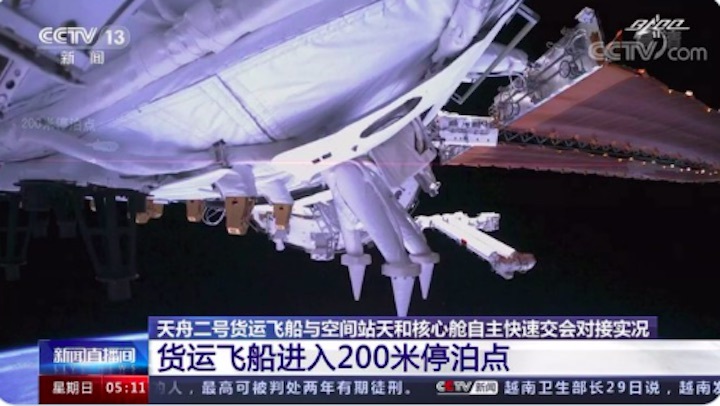
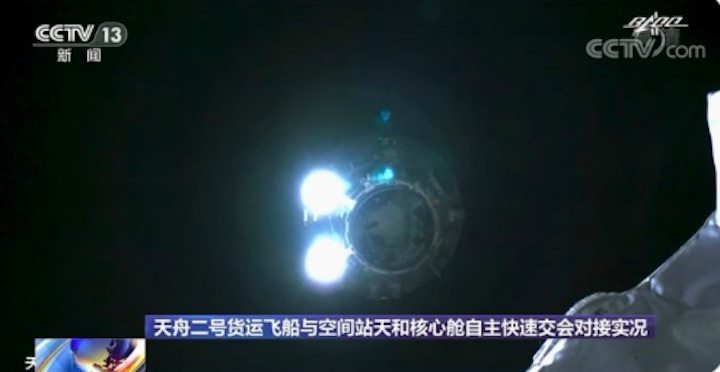

BEIJING -- An automated spacecraft docked with China's new space station Sunday carrying fuel and supplies for its future crew, the Chinese space agency announced.
Tianzhou-2 spacecraft reached the Tianhe station eight hours after blasting off from Hainan, an island in the South China Sea, China Manned Space said. It carried space suits, living supplies and equipment and fuel for the station.
Tianhe, or Heavenly Harmony, is third and largest orbital station launched by China's increasingly ambition space program.
The station's core module was launched April 29. The space agency plans a total of 11 launches through the end of next year to deliver two more modules for the 70-ton station, supplies and a three-member crew.
China was criticized for allowing part of the rocket that launched the Tianhe to fall back to Earth uncontrolled. There was no indication about what would happen to the rocket from Saturday’s launch.
Beijing doesn’t participate in the International Space Station, largely due to U.S. objections. Washington is wary of the Chinese program’s secrecy and its military connections.
